How to Remove Glue From Hardwood Floors Without Damaging Them (3 Methods)
-

- Last updated:
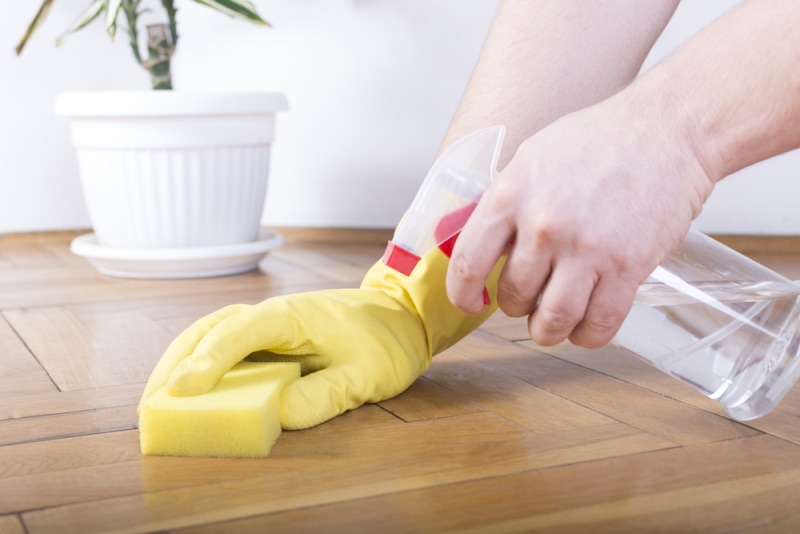
Hardwood floors look beautiful and last a long time, but they can also be notoriously difficult to clean without damaging them. Nothing highlights this quite like adhesives. You typically need to put in a little extra force to get it up, but apply too much force and you’ll damage the floors.
This puts you between a rock and a hard place, which can be challenging to work around. Luckily there are a few different options to remove glue from hardwood floors without damaging them. We’ve highlighted three different options for you here.
How to Remove Glue From Hardwood Floors Without Damaging Them
Method 1: Scrubbing
For most people, this is the preferred method for removing glue from hardwood floors, but it might not be enough to pick up stubborn glue spots. Still, this should be the first method you try for most glue spots on wood floors.
1. Use a Damp Cloth
When you’re looking to scrub up glue you don’t want to use a harsh pad or anything that could wind up damaging the floor. A regular cloth should do the trick, just ensure to soak it in hot water before moving over to the adhesive.
Scrub away at the stain, then put the cloth in a bucket of hot water to work the adhesive off before returning to scrub again.
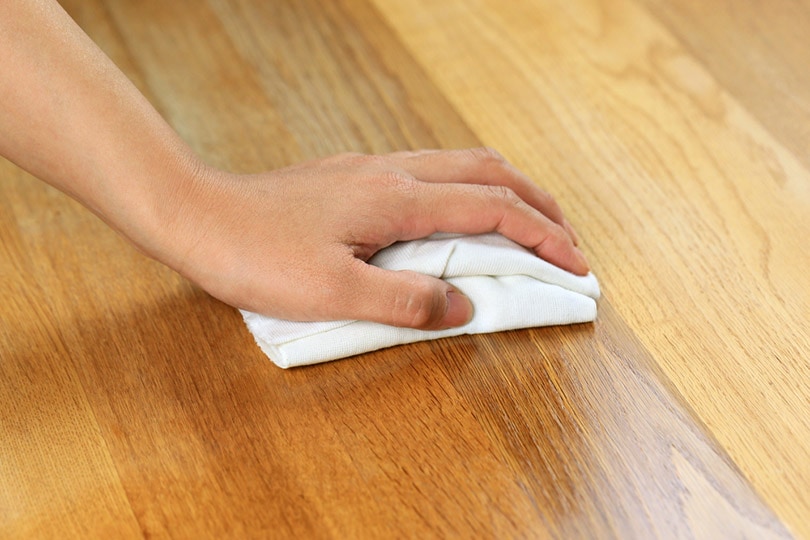
2. Apply Heat
The heat helps break down some of the adhesive properties of glue, which is why it’s a critical tool to help you get the glue off the floor. We recommend soaking the damp cloth in hot water to help maximize its effectiveness, but that’s not your only option. You can also use a heat gun to help loosen up the glue before scrubbing.
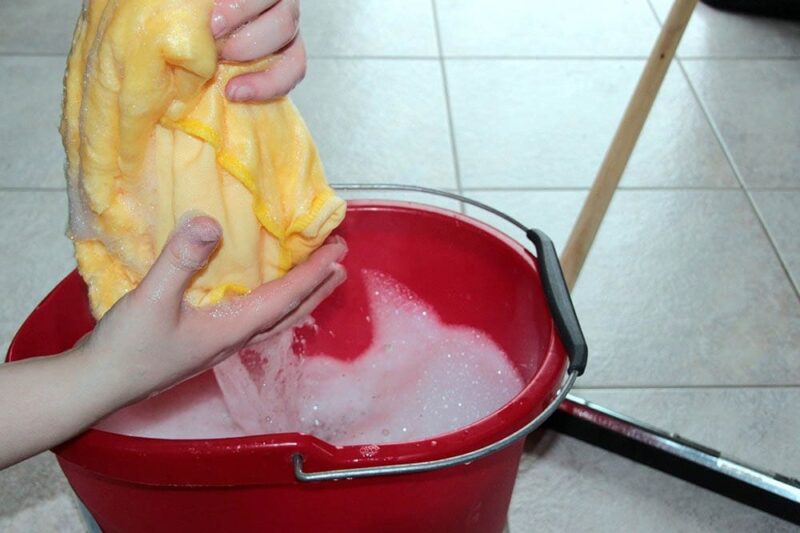
3. Use White Vinegar or Vegetable Oil
If water and heat aren’t loosening up the glue, try a little white vinegar or vegetable oil. Both options can break down the adhesive properties of the glue without damaging the wood. However, don’t use too much white vinegar, and don’t leave it on the floor for too long as it can end up staining the wood.
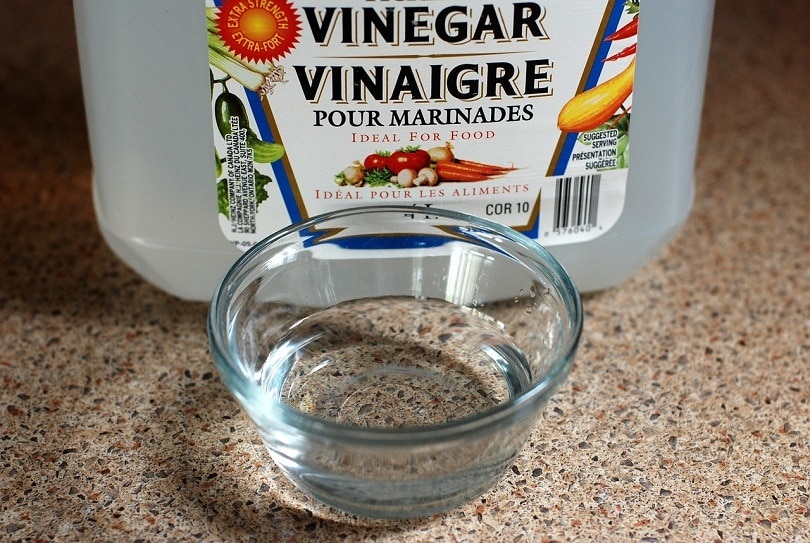
4. Use a Special Adhesive Remover
Plenty of companies sell products that can help loosen up the glue. They vary in effectiveness, but overall, they work better than vinegar, vegetable oil, or heat alone.
Always ensure that they’re safe to use on wood, but if they are they might be just what you need to get up stubborn glue spots without using a ton of elbow grease.
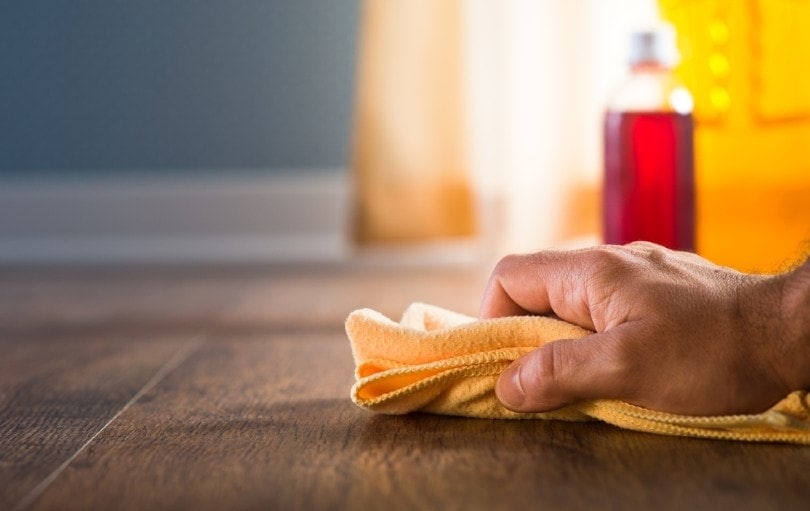
Consult a flooring expert
Find a flooring specialist in your area, and get free, no-commitment estimates for your project.

Method 2: Sanding
If nothing else works to get the glue off a wood floor, sanding will. The problem with sanding isn’t that it’ll damage the floor because it won’t, it’s that it can require a lot of work to do correctly if you sand down too far. Still, if you’re careful or nothing else is working, sanding is the way to go.
1. Prep the Floor
Before you start sanding down the glue on the floor, get the floor ready. Try cleaning up the adhesive with a damp cloth and remove any other objects from the area. This will give you an open surface to sand and get the adhesive off.
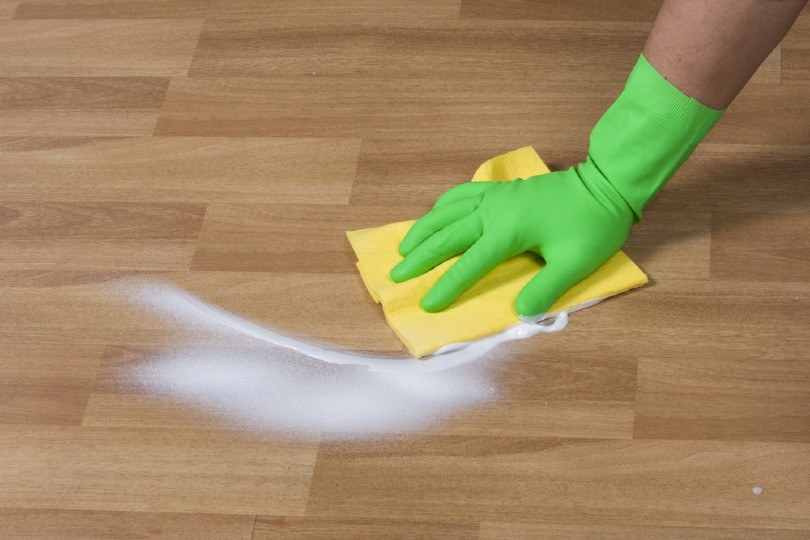
2. Start Sanding
The exact steps you want to follow here all depend on how much glue is on your floor. Ideally, you want to use sandpaper with an extremely fine grit, and you want to use a method that gives you the most control.
Try only to sand off the adhesive; otherwise, you’ll need to re-stain and reseal the floor, and to get a color that matches you’ll need to do the entire wood floor.

3. Re-stain if Necessary
If you sand down too far, you’ll need to re-stain the floor to get a color that matches. It’s a labor-intensive process, but if you don’t, you’ll be able to tell where you sanded down too far.
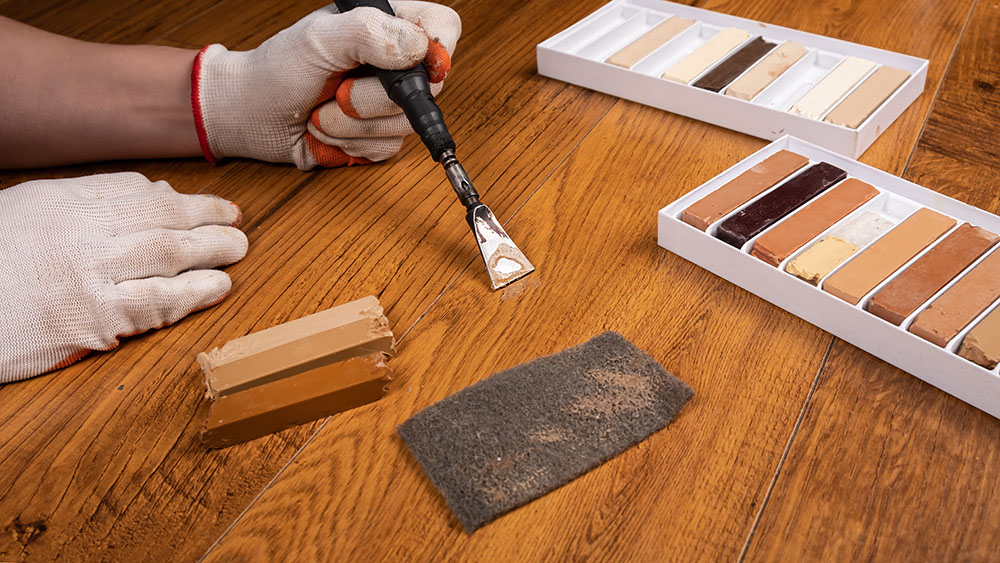
4. Reseal if Necessary
After re-staining the floor, you need to reseal it. Sealing a wood floor keeps moisture from getting into the floor and ruining it and keeps everyday objects and foot traffic from damaging the floors.

Method 3: Scraping
Scraping is an extremely effective but labor-intensive process you can use to get the glue off wooden floors. But while it’s extremely effective you need to be careful with the type of scraper you use and how hard you scrape. Otherwise, you can end up accidentally damaging the floors.
If you have stubborn glue spots where scrubbing doesn’t work and you don’t want to sand, scraping might be your best choice.
1. Prep the Floor
If you’re planning on scraping the glue off the floor, you need to get the floor ready first. Clear off a spot around the glue for you to work and clean off anything that’s sitting on top of the glue. We recommend trying to scrub the floor clean before scrapping.
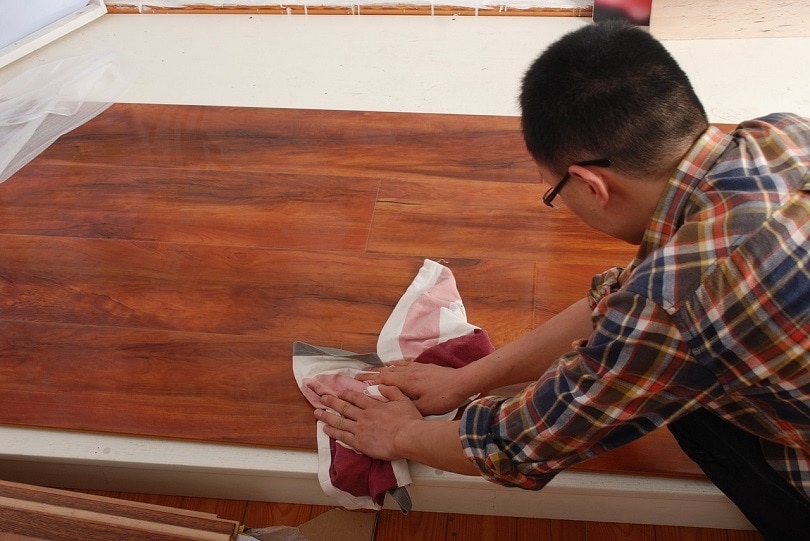
2. Scrape the Adhesive
Using a dull scraper gently push up against the glue. You want to try and work under the glue to pull it up off the wood floor, but don’t push it down too hard or you can end up scraping and damaging the floor. You might only be able to roll the glue during this process, which works just as well when cleaning it up.
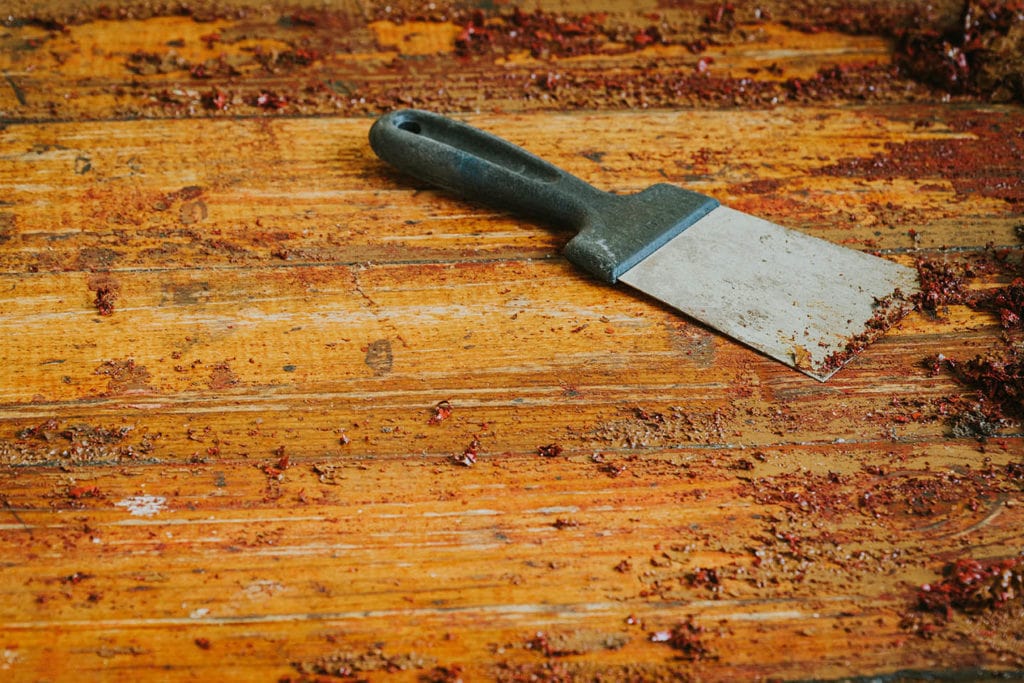
3. Apply Heat
Heat helps break down the adhesive properties of glue, making it easier to scrape up. We recommend using a heat gun during this process if you have one but be careful not to overheat the glue. If you do it’ll become a sticky mess when you’re trying to scrape it up.
You should still be able to get it up with a wet rag, but if you’re using a scraper you want it slightly warm to help it easily come off the floor.
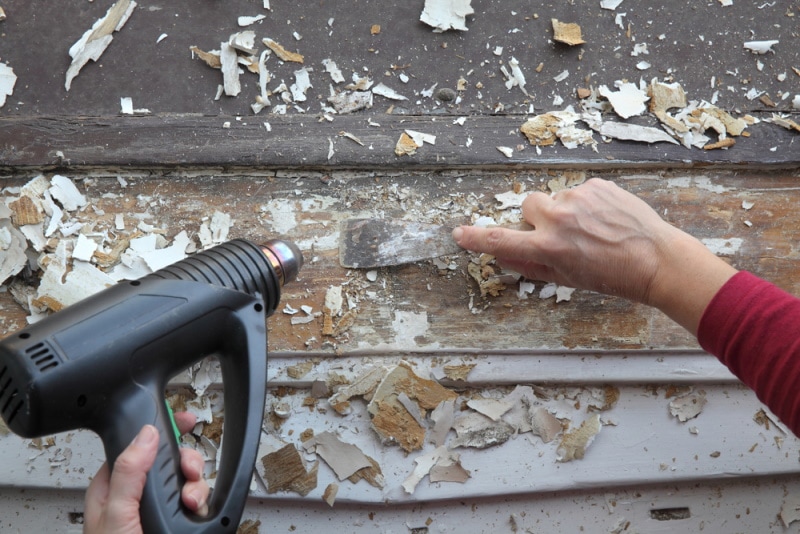
4. Scrape the Adhesive
After you gently heat the glue it’s right back to scraping. Don’t give the glue time to cool down and follow the same principles used when scraping the glue without heat. Don’t push down too hard and take your time.
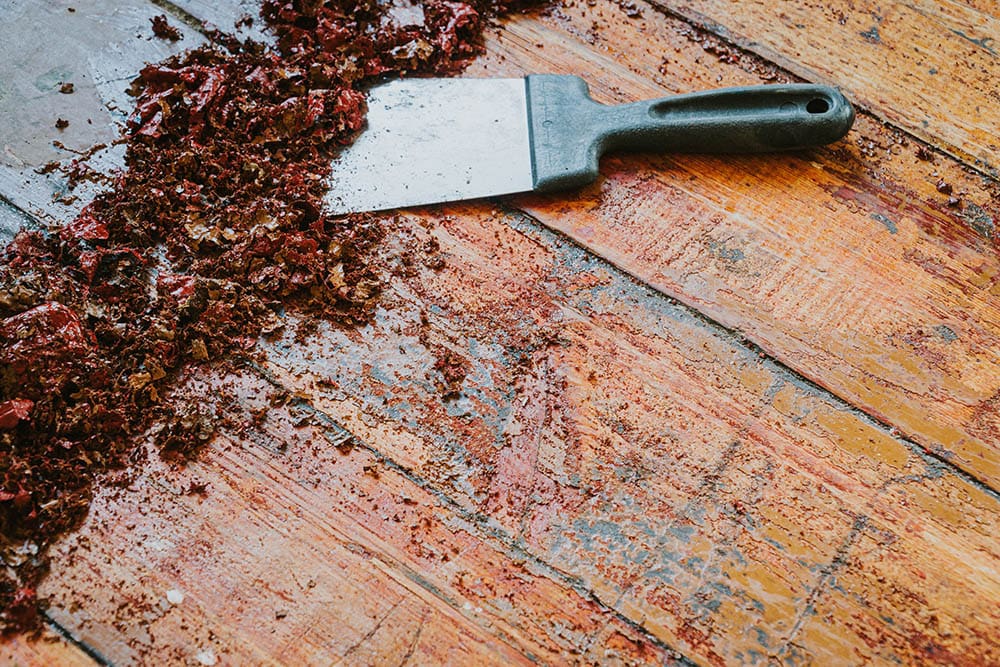
Final Thoughts
Now that you know what options you have to remove glue from hardwood floors, all that’s left is for you to get to cleaning! This isn’t something you’ll want to put off either because the longer the glue stays on the floor the more challenging it will be to get up.
So, get to cleaning and you’ll have those hardwood floors looking like new in no time!
Featured Image Credit: Lucy Lulu, Shutterstock
Contents


